Israel’s Iron Lady
By her own admission, Golda Meir had “a pogrom complex.” In 1946, Golda, as everyone called her, testified in Jerusalem before the Anglo-American Committee of Inquiry on Palestine. She began by reciting one of the darkest elegies in the Hebrew language, “City of Slaughter,” Chaim Nachman Bialik’s poetic response to the 1903 Kishinev pogrom, in which forty-nine Jews were tortured and beaten to death and dozens of women raped—translated here by Peter Cole:
My heart has died.
There is no prayer on my lips.
My hope and strength are gone.
How long? How much longer?Executioner, here’s my neck:
Slaughter! You’ve got the ax and the arm.
The world to me is a butcher-block—
we, whose numbers are small
it’s open season on our blood:
Crack a skull—let the blood
of infant and elder spurt on your chest,
and let it remain there forever, and ever. . . .And cursed be he who cries out: Revenge!
Vengeance like this, for the blood of a child,
Satan has yet to devise.
By the time Golda—then a leader of the Histadrut, the General Organization of Workers in the Land of Israel—declaimed this poem, memories of pogroms had made her ashamed of the Yishuv’s powerlessness—and her own—to rescue Jews from Nazi slaughter.
Golda often spoke of her first memory: her father nailing boards over the front door during a pogrom in what was then part of Russia. “If there is any explanation necessary for the direction which my life has taken,” she said, “perhaps it is the desire and the determination to save Jewish children from a similar scene and from a similar experience.” One person to whom she repeated this memory was Pope Paul VI. In January 1973, on her way home from a meeting of the Socialist International in Paris, she stopped over in Rome and became the first Israeli prime minister to be granted a papal audience. Temporarily awed by the symbolism of the moment, she remarked to her staff: “Listen, what’s going on here? Me, the daughter of Moshe Mabovitch the carpenter, going to meet the Pope of the Catholics?” An assistant replied: “Carpentry is a very respectable profession around here.” The conversation in the Vatican’s Apostolic Palace went badly, or at least not how Pope Paul might have expected: “His Holiness had said he found it hard to understand that the Jewish people, who should be merciful, behaved so fiercely in its own country. I can’t stand it when we are talked to like that.” Golda replied: “Your Holiness, do you know what my own very earliest memory is? It is waiting for a pogrom in Kyiv. When we were merciful and when we had no homeland and when we were weak, we were led to the gas chambers.”
In her absorbing new biography, Deborah E. Lipstadt, a distinguished historian who now serves as the US State Department’s special envoy on antisemitism, deftly narrates what she calls “a life marked with great, almost unparalleled, accomplishments.” As Lipstadt persuasively argues, it was also a life imprinted both with lifelong guilt for having failed the victims of the Holocaust and with a fierce refusal, as Golda told the 1946 inquiry, to surrender to “this helplessness, this lack of security, this dependence upon others.”
Born in Kyiv in 1898, Golda Mabovitch endured a childhood marked by poverty and hunger in Pinsk, her mother’s hometown, and, from age eight, in Milwaukee, where her father had moved to find work.
Not content with serving as a “parlor Zionist” in the Midwest, Golda sailed in 1921 to Palestine with her husband, Morris Meyerson, an émigré she had met as a teenager, and joined Kibbutz Merhavia in the Jezreel Valley. After moving to Jerusalem, she was elected secretary of the women’s labor council of the Histadrut. In a piece she wrote on “the working mother” in 1930, she described “this eternal inner division, this double pull, this alternating feeling of unfulfilled duty—today toward her family, the next day toward her work.” Lipstadt mentions but does not dwell on Golda’s failed marriage, nor on her love affairs, including with future presidents Yitzhak Ben-Zvi and Zalman Shazar and future Histadrut leader David Remez. Lipstadt portrays Morris and their children as victims of Golda’s unremitting devotion to her political career. “Golda should never have married,” recalled her lifelong friend Regina Medzini. “She certainly never should have had children.”
After being one of only two women to sign Israel’s Declaration of Independence in May 1948, Golda served as the country’s first ambassador to the Soviet Union. On Rosh Hashanah 1948, thousands of worshippers gave her a rapturous reception at the Moscow Choral Synagogue in the Russian capital. “If you had sent a broomstick to Moscow and said it represented the State of Israel,” she said with characteristic self-deprecation, “it would have received the same welcome.” (Decades later she filed a $3 million suit against Commentary magazine for an article alleging that during her ambassadorship, she had been duped by Stalin into supplying a list of Soviet Jews who wanted to fight in the war for Israel’s independence. In the end, the magazine’s publisher issued an apology, and Golda dropped the suit.)
On her return, Golda served as Israel’s trailblazing labor minister from 1949 to 1956, which she described as her “seven good years.” She built tens of thousands of homes for new immigrants and a social security system—including health and disability insurance and maternity leave—that stands to this day. “By the time she left office,” Lipstadt writes, “130,000 housing units had been built, 400,000 people had been employed, and 80,000 had acquired a trade.” As Israel’s second foreign minister (1956–1966), under both David Ben-Gurion and Levi Eshkol, she worked eighteen-hour days and inaugurated Israeli aid to developing African nations.
Ben-Gurion praised Golda’s ability to speak “straight into the depths of the heart and soul.” She could certainly be blunt. In May 1948, days before Israel declared its independence, Golda traveled to Amman disguised as an Arab woman in a last-ditch effort to persuade King Abdullah not to join the impending war. The king asked her not to hurry the proclamation of a state. “We have been waiting for two thousand years,” she replied. “Is that hurrying?” Three decades later, Secretary of State Henry Kissinger would complain of her “intransigence.”
As Israel’s fourth prime minister (1969–1974), the first and so far only woman to hold the country’s highest office, Golda’s popularity boosted her image as “the long-suffering but absolutely resolute mother who would do anything for her people,” Lipstadt writes. The role also gave a larger stage to her quick wit. Commenting on her country’s fractured politics, Golda told American president Richard Nixon: “You are the president of 150 million Americans; I am the prime minister of 6 million prime ministers.” On another occasion, she heard that her Cambridge-educated foreign minister, Abba Eban, had disparaged her American-accented Hebrew and boasted that he spoke ten languages. “So does the head waiter at the King David Hotel,” she said. When a student at Princeton asked her how she would respond if Yasser Arafat offered to recognize the Jewish state, Golda retorted with a Yiddish saying: “If my grandmother had wheels, she would have been a carriage.”
Only rarely was she left speechless. On his first visit to Israel in the early 1970s, Jimmy Carter, then governor of Georgia, met with the prime minister. She asked Carter to share his observations. “I said that I had long taught lessons from the Hebrew scriptures,” Carter recalled, “and that a common historical pattern was that Israel was punished whenever the leaders turned away from devout worship of God. I asked if she was concerned about the secular nature of her Labor government.” This seems like the perfect setup for a classic quip from the avowedly secular Golda. But unnerved by Carter’s surprise that her country was something other than ancient Judea, she made no retort.
By 1970, a survey in Esquire magazine numbered Golda as among the “100 Most Important People in the World.” In the same years, Gallup polls repeatedly ranked her among the most admired women in the world. At home, meanwhile, she enjoyed an 80 percent approval rating.
All this collapsed on October 6, 1973, when Syria and Egypt attacked Israel. Golda called the Yom Kippur War “a nightmare . . . which will always be with me.” Lipstadt calls it “an ignominious end to a storied career.”
Golda had ignored numerous warnings and accepted her advisers’ reassurances, with disastrous results. Major-General Chaim Herzog, then head of Israeli military intelligence (later Israel’s president and the father of its current president), acknowledged her “enormous composure” during the war. When a panicked Moshe Dayan begged her to accept a premature cease-fire with Egypt, she replied, “that is not a cease-fire, it is surrender.” She herself said that even as she battled lymphoma, she drew her strength during the war “from the sense of having no choice, from a mystical belief that we must win.” Nonetheless, Herzog accused the prime minister of “stubborn blindness” to threats and warnings in the weeks and months before the surprise attack.
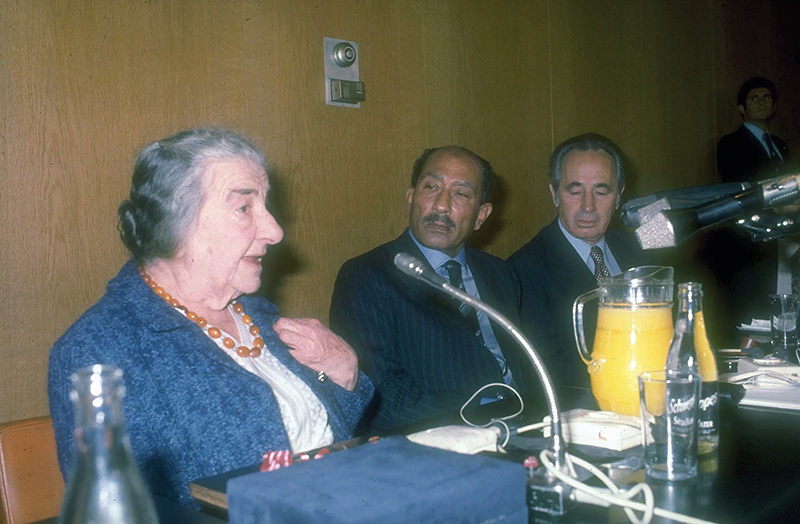
Anwar Sadat and Shimon Peres listen to Golda Meir during a meeting in 1977. (Photo by Sa’ar Ya’acov/GPO.)
In April 1973, Egyptian president Anwar Sadat had openly declared his intention to launch an assault. In face-to-face meetings with Golda in May and again in late September, ten days before the war, Jordan’s King Hussein alerted her that a coordinated attack was imminent. But IDF chief of staff David “Dado” Elazar told Golda that the Egyptian forces were merely conducting exercises along the Suez Canal (an eerie foreshadowing of the Israeli army’s misreading of Hamas training activities along the Gaza border this past fall). Others, including former IDF chiefs of staff Dayan, Rabin, and Bar-Lev, assumed that the Arab armies were engaged in saber-rattling and dismissed Arab fighting capability—a complacency that translated into a lack of preparation at the front.
Such complacency proved as catastrophic as it was pervasive. In late September 1973, a Labor Party campaign ad featured a picture of Golda with the words: “Quiet reigns on the banks of the Suez.” The same month, Major-General (Res.) Ariel Sharon said: “Israel is now facing very quiet years from a security point of view.” As Kissinger later said, until the day of the attack, Golda had “considered Israel militarily impregnable.” Within the first twenty-four hours of the war, Israel’s border defenses were overrun, hundreds of Israeli soldiers were killed, 162 were taken prisoner by the Egyptians, and almost 50 more were captured by the Syrians. By the cessation of hostilities, some 2,600 Israelis were killed and thousands more wounded—more casualties than in the 1967 Six-Day War and the 1967–1970 War of Attrition combined.
Golda herself viewed the war, Lipstadt notes, as “a spectacular failure,” which had left her formidable image irreparably tarnished. “She was not just a prime minister,” said journalist Amos Elon, “she was something like a talisman for security.” On April 1, 1974, the inquiry known as the Agranat Commission published its interim conclusions on the astounding failures of Israeli intelligence that led to the military debacle. Led by Supreme Court justice Shimon Agranat, the commission exonerated the political echelon and put the blame squarely on the shoulders of the IDF. “Golda Meir acted correctly in the critical days that preceded the outbreak of the war,” it said. The Israeli public was stunned. Thousands of demonstrators and bereaved parents demanded the resignation of the defense minister, Dayan, and the prime minister. On April 10, Golda, drawn and ashen, announced her resignation at a meeting of the Labor Party. “I can no longer bear this burden,” she said.
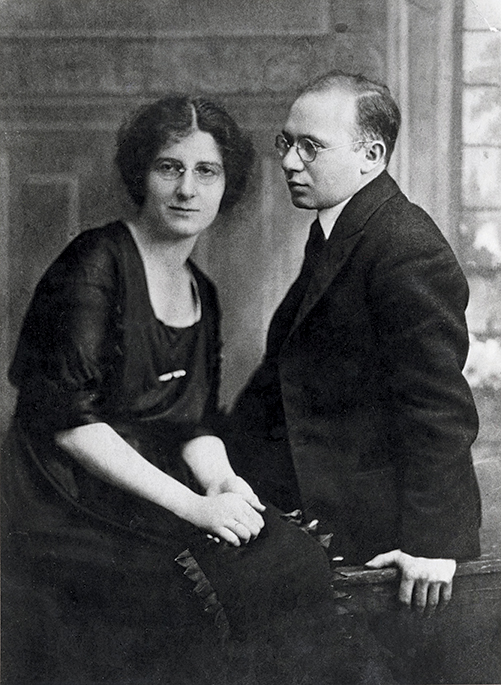
Golda died in December 1978, at age eighty, on the very day that Prime Minister Menachem Begin, who had shattered the Labor Party’s hegemony with his stunning electoral victory the year before, flew to Oslo to accept the Nobel Peace Prize together with Sadat. To the end, she feared that her own pursuit of peace had been in vain. “We don’t want wars even when we win,” she said. In accordance with her wishes, no eulogies were heard at her funeral at Mount Herzl in Jerusalem. Instead, excerpts of writings and speeches were read aloud, among them: “Peace is our most vital concern and our most ardent desire.”
A biographer, Virginia Woolf wrote, must “give us the creative fact; the fertile fact; the fact that suggests and engenders.” For Lipstadt, the fertile fact is her subject’s credo of national self-reliance. “Jews in general are not loved,” Golda said, “weak Jews are loved even less.”
Lipstadt isn’t the first to trace this trait to the heart of Golda’s sensibility. Sir Isaiah Berlin somewhat mockingly described Golda as:
Stout hearted, tough, suspicious, her arms akimbo with the air of one who says “We know them, the Gentiles, there is nothing they haven’t done to us or are ready to do. We don’t trust nobody, we would rather go down fighting than be fooled once again.”
Over dinner in Jerusalem, the German-born intellectual Hannah Arendt was similarly taken aback by Golda’s expressions of unwavering belief in the Jewish people, which struck her as a form of “Zionist paganism.” Lipstadt, by contrast, describes that unwavering belief as essential to the ways Golda understood herself and “for close to five decades . . . shaped how American Jews saw and understood Israel.”
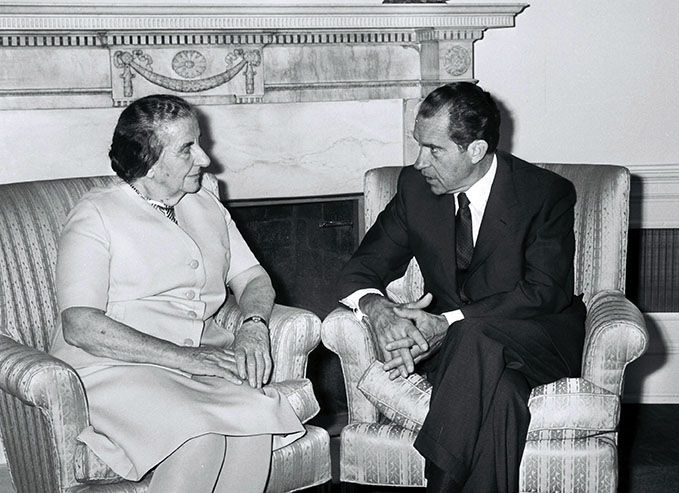
The wide shelf of Golda books includes early rags-to-riches hagiographies (by her close friend Marie Syrkin in 1955 and Peggy Mann in 1971); a pair of more critical exposés published in the 1980s (by Ralph Martin and Robert Slater); and intimate accounts by her son, Menachem Meir, and by Meron Medzini (son of Regina Medzini and a former spokesman for Golda). These were more recently followed by capacious volumes by Elinor Burkett, Francine Klagsbrun, and Pnina Lahav. Lipstadt’s book offers the most perceptive account to date of how Golda forged her conviction in the fires of personal and collective memory.
Suggested Reading
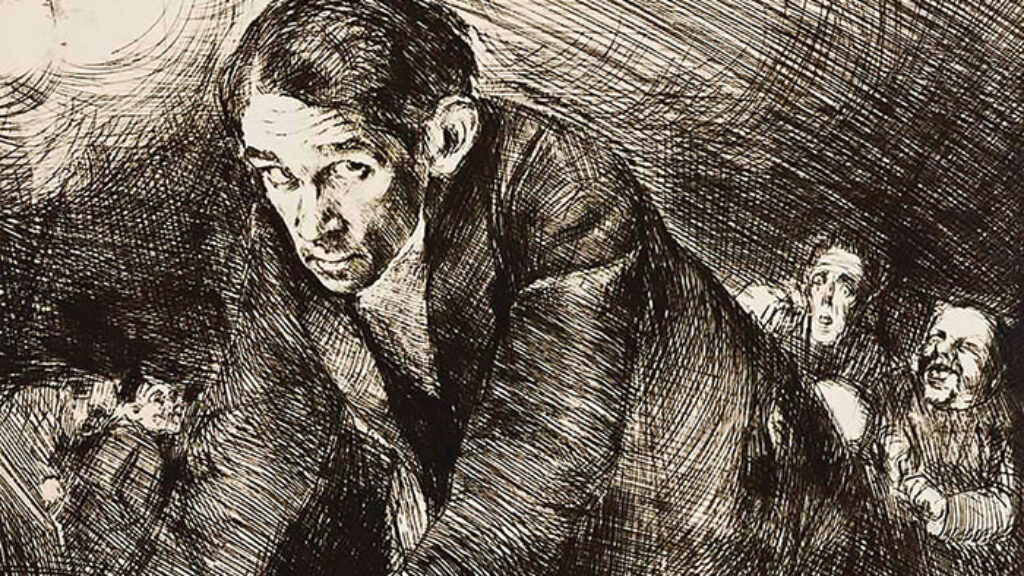
And the Heart Is Forever Broken
Amid the ferment of interwar Poland, two opposite motions guided Jews who followed the sometimes blinding torches that lit the way toward modern culture. The first surged outward. The second traveled inward.

The Gray Lady and the Jewish State
Jerold Auerbach’s archly titled new study Print to Fit: The New York Times, Zionism and Israel, 1896–2016 is a well-researched and, for the most part, damning brief of the Times’s news coverage and editorial attitudes toward Zionism and Israel for over a century.
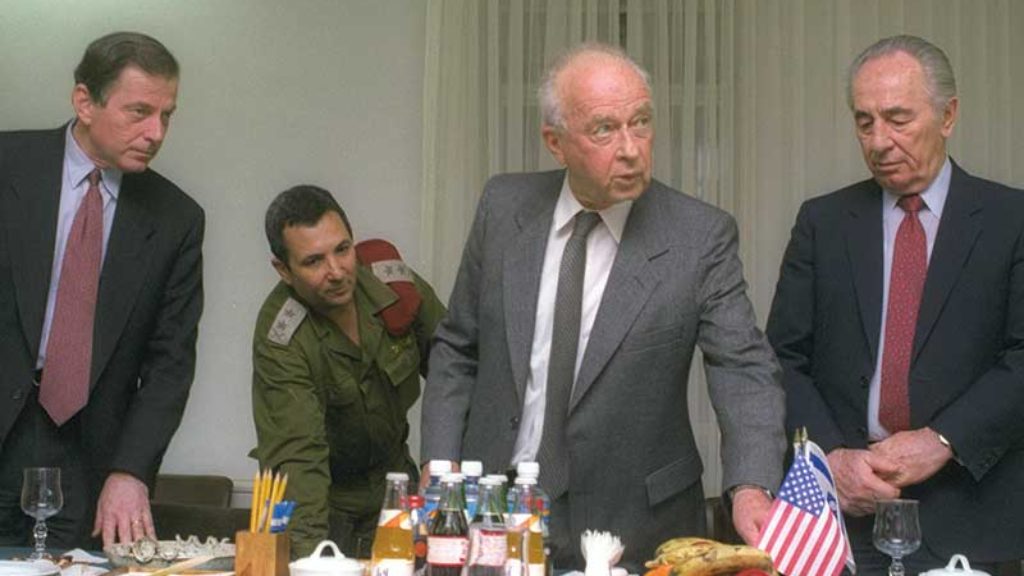
A Life with Consequences
Yitzhak Rabin was a realist who saw peacemaking not as the source of security but as a further development that needed to be based upon security.
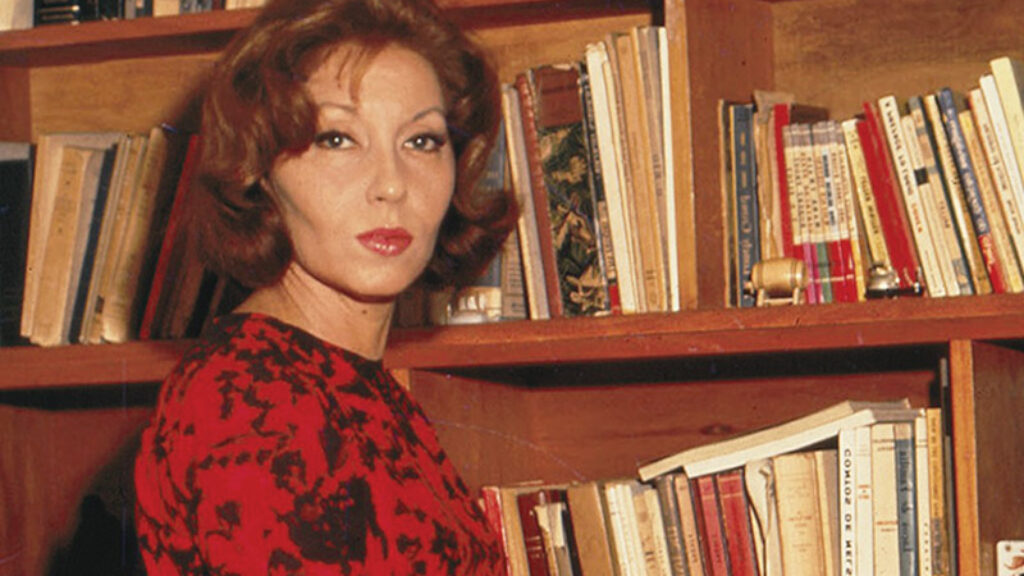
“I am an Object Loved by God”: Rereading Clarice Lispector
The great Brazilian novelist Clarice Lispector rarely acknowledged her own Jewishness but when the Jornal do Brasil fired her a few days after the Yom Kippur War broke out, something changed.
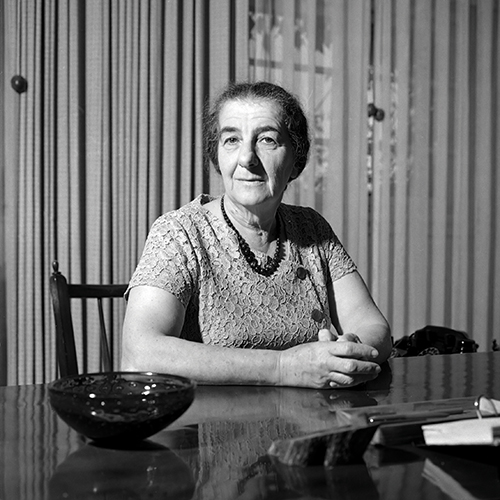
Comments
You must log in to comment Log In